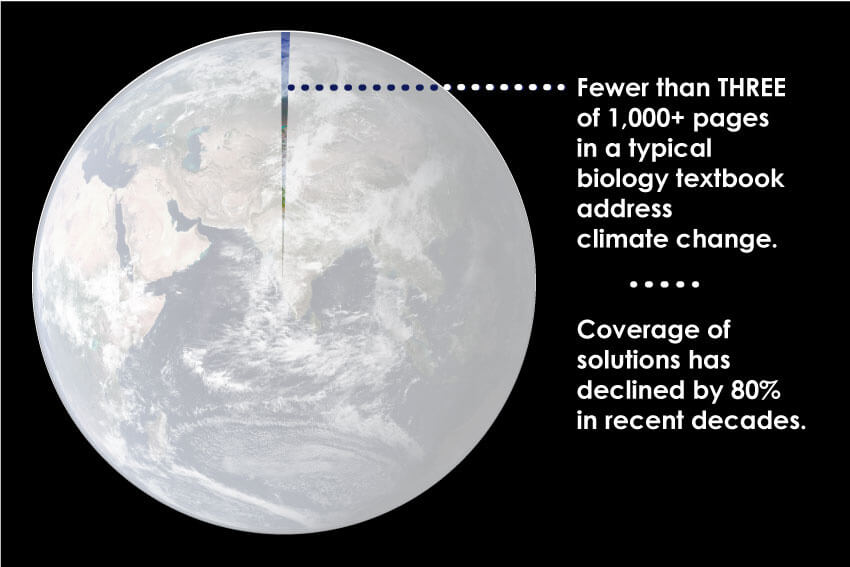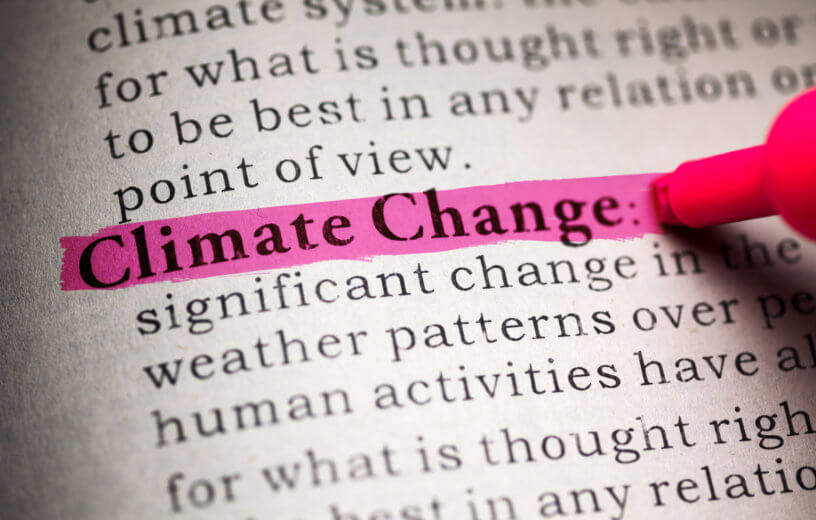Researchers say textbooks today not only cut back on the issue of global warming compared to previous years, but the topic is found further back in books, undermining its urgency and importance
RALEIGH, N.C. — Today’s college textbooks covering life sciences are not as accurate as students consider them to be, finds a new study from North Carolina State University. Their study shows that biology textbooks are slow to keep pace with the current discoveries and state of climate change.
A brief acknowledgment or the emittance of climate change information entirely undermines the severity of the crisis on our warming planet, scientists say. What’s more, a gap in climate change knowledge and could affect how future generations take it seriously. Their paper is published in PLoS One.
“In short, we found biology textbooks are failing to share adequate information about climate change, which is a generation-defining topic in the life sciences,” says Jennifer Landin, corresponding author of the study and an associate professor of biological sciences at NC State, in a university release. “These books are the baseline texts for helping students understand the science of life on Earth, yet they are providing very little information about a phenomenon that is having a profound impact on habitats, ecosystems, agriculture – almost every aspect of life on Earth.”
For example, textbooks published in the 2010s had less information about climate change than in the previous decades. The lack of information goes against the significant strides scientists have taken to understand how climate changes influences ecosystems and the environment.
The current study looked at climate change coverage in 57 college biology textbooks published between 1970 and 2019. The team found the topic has been covered, but at varying lengths across the five decades. Before the 1990s, textbooks spent less than 10 sentences talking about climate change. During the 1990s, the length rose from 10 to 30 sentences. In the early 2000s, there were 52 sentences on the topic which aligns with the expanded research efforts into understanding the impact of climate change. However, the amount of climate coverage in textbooks dropped in the 2010s. It went from a median of 52 to 45 sentences.
“One of the most troubling findings was that textbooks are devoting substantially less space to addressing climate solutions now than they did in the 1990s – even as they focus more on the effects of climate change,” explains Landin. “That suggests to students that nothing can be done, which is both wildly misleading and contributes to a sense of fatalism regarding climate change.”

In addition to length, the nature of the content has also shifted over time. In the 1990s, about 15% of the sentences involved actionable solutions to climate change. More recent decades, however, have made up only 3% of climate content. Another noticeable change is the position of climate change sections with the topic being moved toward the back of the textbook.
“This is important because most instructors present textbook content in order, which means topics at the end of the book are often skipped,” Landin says. Climate content made up 15% of the final text in the 1970s, and in the 2010s this was pushed back to the last 2.5% of the text.
Though not every change was bad. One positive change to textbooks made in the 2000s and 2010s is a wider variety of climate-relevant information. This includes how climate affects species distributions, which gives multiple examples to students on how climate change harms the environment and ecosystems.
“However, we are hoping that this study will serve as a wake-up call for publishers and instructors,” adds Landin. “We need to do a much better job of incorporating climate change into our courses if we want to prepare students to understand the role that climate change is playing in shaping life on Earth and how we study it.”

Biology, physics, math, history, etc. has nothing to do with the flawed research on climate change. Weather and any change in climate falls under Earth Science or meterology.
OMG in the 90s Biology experts predicted that there would be no more Polar bears by 2010. This was supported by all the data and all the experts, which is why if you wanted to pass the course you had to subscribe to this crap.
After 40 years of nonsense there is not a single prediction of “climate change” that has been accurate.
Climate change is not science any more that Astrology is science.
It belongs only in religious studies as it is a (highly profitable and very expensive) cult.
Absolutely agree.
Do they take a balanced approach to the subject? Do they mention that today’s CO2 levels are actually some of the lowest in geological history and were over 2000 ppm in the past when life on Earth thrived? For all the angst over the ice caps, do they even once mention that for the vast majority of Earth’s history there were no ice caps at all? Do they discuss the fact that the time they measure temperatures against was one of the coldest averages ever and from there, temperatures could ONLY increase without destroying most life on the planet? The answer to all these questions is a resounding,“No.” That is the real problem.